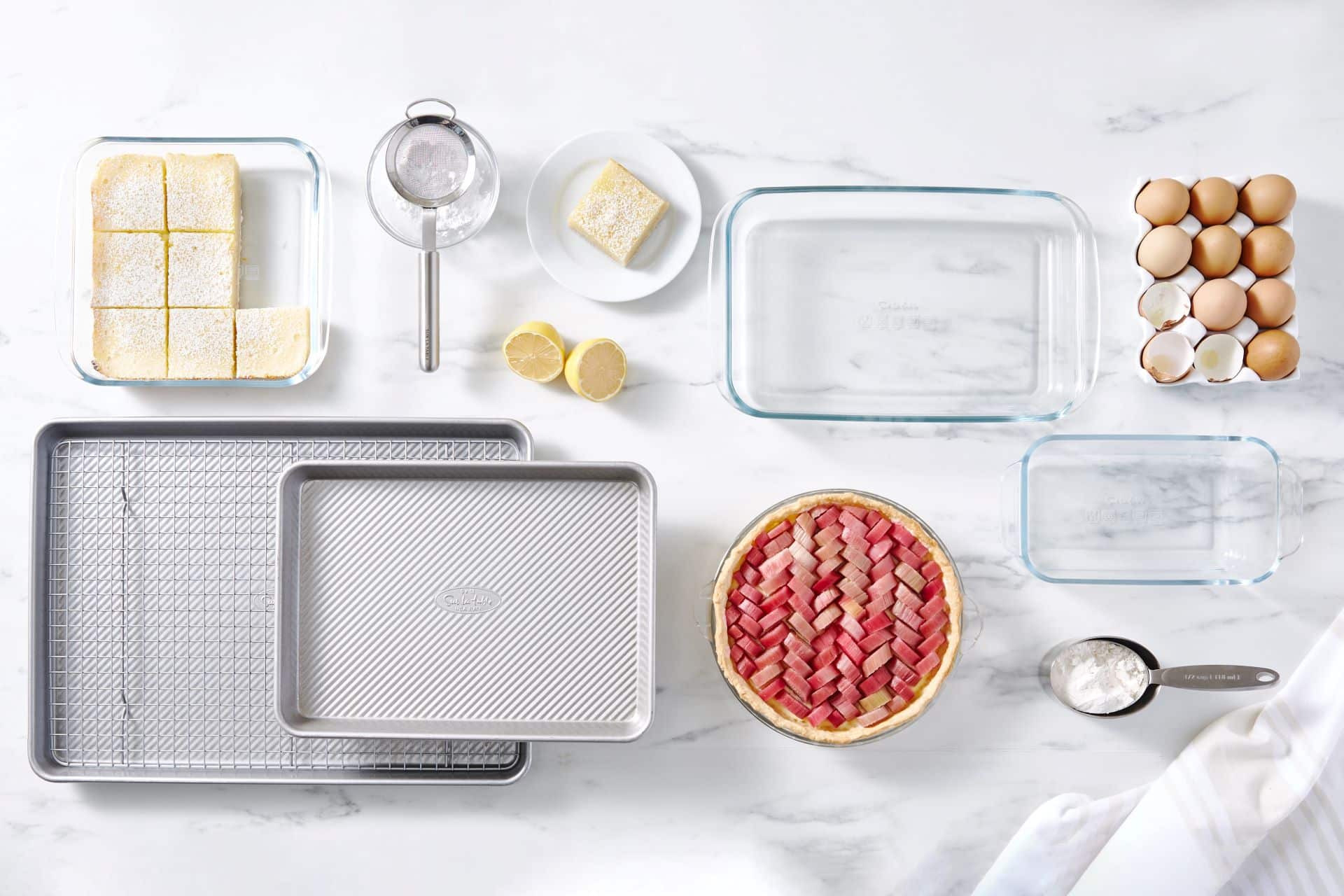Decisions, decisions.


As a home baker, you probably have a collection of bakeware in your kitchen, from pie pans and loaf pans to cookie sheets and cake pans. But have you ever stopped to think about the materials that these pans are made of, and how they can affect the final product of your baked goods?
From texture and taste to how evenly things cook, we found that different materials can have a significant impact on your baked goods. Here’s what we know.
Hungry for more? Shop our collection of professional-grade bakeware for your next baking adventure!
Metal bakeware is the most popular type of bakeware, and it comes in a variety of materials, including aluminum, stainless steel and carbon steel.
Metal pans are durable, easy to clean and conduct heat well, making them ideal for baking cookies, cakes and breads. However, metal pans can cause your baked goods to over-brown or even burn on the bottom, especially if they’re not lined with parchment paper or a silicone mat.
On top of that, the color and coating of the metal plays a role. Dark-colored metals and matte metals absorb heat quicker, causing the food to cook faster. Light-colored metals and pans with a shiny finish retain less heat and bake food more evenly. Nonstick coatings on metal bakeware can also affect baking times and shouldn’t be used in high heat cooking, like broiling.
Many of the same foods that you bake in a metal pan can also be baked in a cast iron pan, like biscuits, rolls, corn bread and cobblers—anything that would benefit from a crispy exterior.
It’s a popular material due to its ability to retain heat and distribute it evenly. Cast iron also has a natural nonstick surface that improves with use over time. Plus, it can endure high temperatures, which makes it ideal for baking bread or for use around the campfire!
Glass bakeware is another material that distributes heat evenly and holds heat well, which is why we love it for casseroles and bread puddings.
But, unlike metal, a glass baking dish acts as more of an insulator versus a heat conductor, which means your food will stay hotter for longer when you take it out of the oven. Because it takes longer to heat up and cool down, it’s more prone to shattering if you don’t handle it carefully. To avoid this, look for glassware made from borosilicate glass, which is resistant to the sharp changes in temperature that can occur when going from oven to countertop.
The real perk of glass bakeware? It doesn’t pick up any taste from the pan itself, since glass is a non-reactive material.
Ceramic baking dishes perform similarly to glass pans in the same way cast iron pans compare to metal pans. This material works best for dishes that need to be baked slowly and evenly, such as casseroles, pies, lasagnas, tarts and quiche.
Ceramic dishes are on the rise for their aesthetic, coming in a variety of colors, patterns and finishes, which makes them a great option for going from oven-to-table with ease. But fair warning—they can be heavy and take longer to heat up than other materials.
Stoneware might look similar to ceramic, but there’s one key difference: stoneware is nonporous, whereas ceramic is porous. Its surface helps absorb moisture, giving your baked goods a crispy exterior. Just be sure to preheat the stoneware before baking to ensure even cooking.
Stoneware holds heat very well, so it bakes food and keeps food warm, just like glass bakeware. This also means it doesn’t always handle high heat well. Some stoneware baking dishes are broiler-safe and some are not, so keep an eye out for that.
Silicone bakeware is lightweight, flexible and nonstick, making it the ideal option for baking muffins, cupcakes and other delicate baked goods. Since silicone is a nonstick substance, you don’t have to spray molds with oil or grease for an easy release. But the type of silicone matters—use approved, food-grade silicone at all times.
For the most part, silicone pans will cook food evenly without much risk of burning, but that also means you’ll get less browning on dishes where it’s desired. We like to caution that learning how to bake in silicone will take some trial and error. Plus, there’s extra importance in keeping them clean, since they can retain odor if you don’t wash them properly.
Hungry for more? Shop our collection of professional-grade bakeware for your next baking adventure!
JOIN THE CONVERSATION